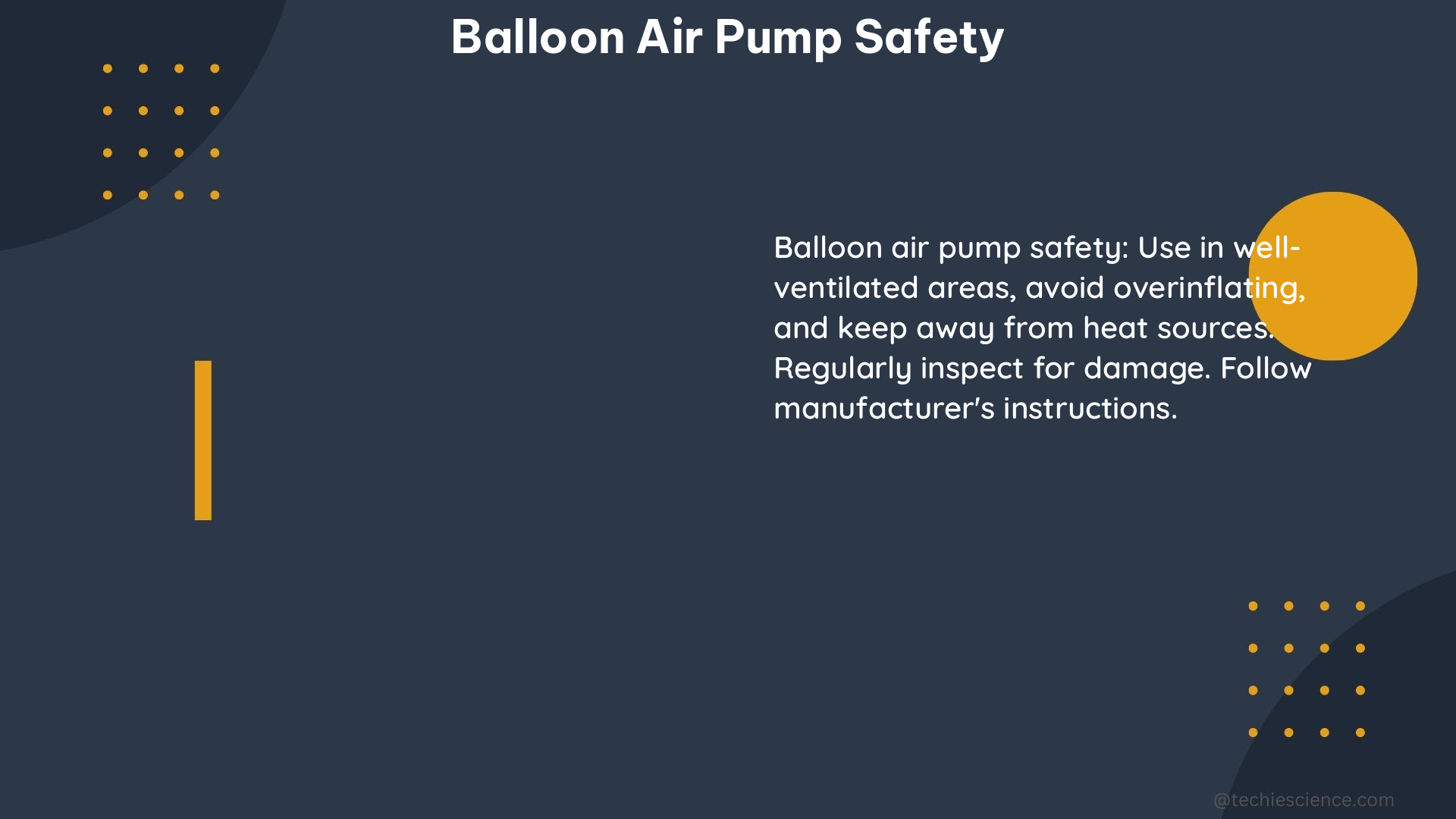Balloon air pumps are essential tools for inflating balloons, but their improper use can lead to serious safety hazards. This comprehensive guide delves into the critical aspects of balloon air pump safety, providing you with the necessary knowledge and quantifiable data to ensure a safe and enjoyable balloon-decorating experience.
Maximum Recommended Pressure
One of the primary concerns in balloon air pump safety is the risk of over-inflation, which can cause balloons to burst and potentially lead to injuries. The Boston Fire Department recommends a maximum pressure of 0.25 psi (pounds per square inch) for latex balloons. Exceeding this limit can result in balloon rupture and pose a risk to people nearby.
To ensure safe operation, it is crucial to adhere to the manufacturer’s recommended pressure specifications for your specific balloon air pump model. Failure to do so can lead to catastrophic failures and put you and those around you in harm’s way.
Transfer Efficiency in Drug-Coated Balloons

In the medical field, balloon air pumps are used to inflate drug-coated balloons, which are used for targeted drug delivery. The transfer efficiency of the air spray coating method is a critical factor in ensuring the correct dosage of the drug.
According to a study published in the Journal of Controlled Release, the transfer efficiency of paclitaxel to the balloon using an air spray coating method was 0.75%. This value is crucial for healthcare professionals to determine the appropriate drug dosage and ensure the safety and efficacy of the treatment.
Pressure Relief Valves
Balloon air pump safety is further enhanced by the inclusion of pressure relief valves. These valves automatically release excess pressure, preventing over-inflation and potential injuries. The specific pressure at which these valves activate can vary among different pump models, so it is essential to familiarize yourself with the specifications of your particular air pump.
Some high-quality balloon air pumps may feature adjustable pressure relief valves, allowing you to customize the activation threshold based on the type of balloons you are inflating. This added flexibility can help you maintain a safer operating environment.
Environmental Considerations
In addition to safety concerns, the environmental impact of balloon air pumps is also an important factor to consider. Some manufacturers, such as the one mentioned in the provided source, have designed their electric balloon pumps using durable, safe, and environmentally friendly materials.
By choosing eco-friendly balloon air pumps, you can contribute to a more sustainable balloon decoration and inflation process. This not only benefits the environment but also aligns with the growing demand for sustainable and responsible consumer products.
Balloon Air Pump Maintenance and Inspection
Proper maintenance and regular inspection of your balloon air pump are crucial for ensuring its safe and reliable operation. Here are some key steps to consider:
-
Cleaning: Regularly clean the air pump’s components, including the air intake, filters, and any other parts that come into contact with the inflated balloons. This helps prevent the buildup of debris and ensures optimal airflow.
-
Inspection: Visually inspect the air pump for any signs of wear, damage, or malfunctioning parts. Pay close attention to the pressure relief valve, hoses, and any other safety-critical components.
-
Calibration: Periodically calibrate the air pump’s pressure gauge to ensure it is accurately displaying the inflation pressure. This helps you maintain precise control over the balloon inflation process.
-
Replacement: Replace any worn or damaged parts promptly to prevent potential failures and ensure the continued safe operation of your balloon air pump.
By following these maintenance and inspection guidelines, you can prolong the lifespan of your balloon air pump and maintain a high level of safety throughout its use.
Balloon Air Pump Safety Training
To further enhance your balloon air pump safety knowledge, consider attending or organizing training sessions. These sessions can cover topics such as:
- Proper inflation techniques
- Recognizing and responding to over-inflation scenarios
- Maintenance and troubleshooting procedures
- Emergency protocols and first aid measures
Engaging in regular safety training can help you and your team develop the necessary skills and knowledge to handle balloon air pumps safely and effectively.
Conclusion
Balloon air pump safety is a critical aspect of balloon decoration and inflation. By understanding and adhering to the recommended guidelines and specifications, you can ensure a safe and enjoyable experience for yourself and those around you.
Remember to always operate your balloon air pump within the maximum recommended pressure, be mindful of the transfer efficiency in medical applications, and take advantage of safety features like pressure relief valves. Additionally, consider the environmental impact of your balloon air pump and maintain it diligently to prolong its lifespan.
By following the comprehensive guidance provided in this article, you can confidently and safely use your balloon air pump, creating beautiful and memorable balloon displays while prioritizing the safety of all involved.
References:
– Paclitaxel-Coated Balloon Catheters
– Boston Fire Department Recommendations
– Electric Balloon Pump

The lambdageeks.com Core SME Team is a group of experienced subject matter experts from diverse scientific and technical fields including Physics, Chemistry, Technology,Electronics & Electrical Engineering, Automotive, Mechanical Engineering. Our team collaborates to create high-quality, well-researched articles on a wide range of science and technology topics for the lambdageeks.com website.
All Our Senior SME are having more than 7 Years of experience in the respective fields . They are either Working Industry Professionals or assocaited With different Universities. Refer Our Authors Page to get to know About our Core SMEs.